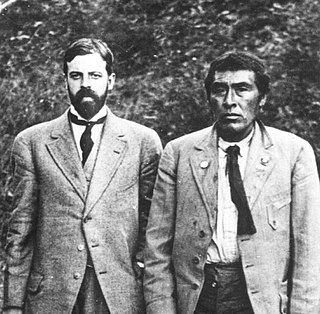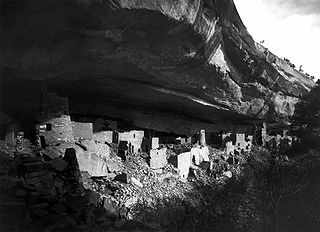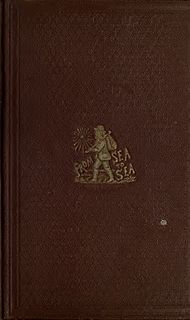 W
WAnnie Heloise Abel was among the earliest professional historians to study Native Americans. She was one of the first thirty women in the United States to earn a PhD in history. One of the ablest historians of her day, Abel was an expert on the history of British and American Indian policies. As another historian has put it: "She was the first academically trained historian in the United States to consider the development of Indian-white relations and, although her focus was narrowly political and her methodology almost entirely archival-based, in this she was a pioneer."
 W
WSophie Bledsoe Aberle was an American anthropologist, physician and nutritionist known for her work with Pueblo people. She was one of two women first appointed to the National Science Board.
 W
WJames Adair (c.1709–1783) was a native of County Antrim, Ireland, who went to North America and became a trader with the Native Americans of the Southeastern Woodlands.
 W
WTimothy Horton Ball was an American historian. He is known for writing The Creek War of 1813 and 1814. The book is a well-known source for Choctaw and Creek Indian history.
 W
WJoseph Balmer was a noted Swiss 20th century historian and expert on Native Americana.
 W
WAndrew Jackson Blackbird was an Odawa (Ottawa) tribe leader and historian. He was author of the 1887 book, History of the Ottawa and Chippewa Indians of Michigan.
 W
WÉtienne de Veniard, Sieur de Bourgmont was a French explorer who documented his travels on the Missouri and Platte rivers in North America and made the first European maps of these areas in the early 18th century. He wrote two accounts of his travels, which included descriptions of the Native American tribes he encountered. In 1723, he established Fort Orleans, the first European fort on the Missouri River, near the mouth of the Grand River and present-day Brunswick, Missouri. In 1724, he led an expedition to the Great Plains of Kansas to establish trading relations with the Padouca.
 W
WHoratio Bardwell Cushman was an American historian. He is known for writing a History of the Choctaw, Chickasaw, and Natchez Indians. The book is well known source for Choctaw, Chickasaw, and Natchez Indian history.
 W
WDavid Cusick was a Tuscarora artist and the author of David Cusick’s Sketches of Ancient History of the Six Nations (1828). This is an early account of Native American history and myth, written and published in English by a Native American.
 W
WAngie Elbertha Debo, was an American historian who wrote 13 books and hundreds of articles about Native American and Oklahoma history. After a long career marked by difficulties, she was acclaimed as Oklahoma's "greatest historian" and acknowledged as "an authority on Native American history, a visionary, and an historical heroine in her own right."
 W
WRoxanne Dunbar-Ortiz is a long-time American activist, writer, and historian.
 W
WElizabeth Anne Fenn is an American historian. Her book Encounters at the Heart of the World: A History of the Mandan People, won the 2015 Pulitzer Prize for History. She serves as the Walter S. and Lucienne Driskill chair in Western American History at University of Colorado-Boulder.
 W
WAlice Cunningham Fletcher was an American ethnologist, anthropologist, and social scientist who studied and documented American Indian culture.
 W
WJames Hall was a United States judge and man of letters. He has been called a literary pioneer of the Midwestern United States.
 W
WCharles Melvin Hudson, Jr. (1932–2013) was an anthropologist, a professor of anthropology and history at the University of Georgia. He was a leading scholar on the history and culture of Indigenous peoples of the Southeastern Woodlands of the present-day United States. He is known for his book mapping the expedition of Spanish explorer Hernando de Soto in the mid-16th century in the Southeast, based on both the expedition's records and sites identified through archeology and anthropology.
 W
WAlfred Louis Kroeber was an American cultural anthropologist. He received his PhD under Franz Boas at Columbia University in 1901, the first doctorate in anthropology awarded by Columbia. He was also the first professor appointed to the Department of Anthropology at the University of California, Berkeley. He played an integral role in the early days of its Museum of Anthropology, where he served as director from 1909 through 1947. Kroeber provided detailed information about Ishi, the last surviving member of the Yahi people, whom he studied over a period of years. He was the father of the acclaimed novelist, poet, and writer of short stories Ursula K. Le Guin.
 W
WGideon Lincecum was an American pioneer, historian, physician, philosopher, and naturalist. Lincecum is known for his exploration and settlement of what are now the U.S. states of Alabama, Mississippi and Texas, which was then beyond the western borders of the Thirteen Colonies. Lincecum had good relations with Native Americans as he explored the wilderness in the American Deep South. He was son of Hezekiah and Sally (Hickman) Lincecum, and was born in Warren County, Georgia, on April 22, 1793. Lincecum was self-educated. He spent his boyhood principally in the company of Muskogees. After successive moves, he and his wife, the former Sarah Bryan, moved in 1818 with his parents and siblings to the Tombigbee River, above the site of present Columbus, Mississippi.
 W
WCharles Fletcher Lummis was a United States journalist, and an activist for Indian rights and historic preservation. A traveler in the American Southwest, he settled in Los Angeles, California, where he also became known as an historian, photographer, ethnographer, archaeologist, poet, and librarian.
 W
WMalcolm Margolin is an author, publisher, and former executive director of Heyday Books, an independent nonprofit publisher and cultural institution in Berkeley, California. From his founding of Heyday in 1974 until his retirement at the end of 2015, he oversaw the publication of several hundred books and the creation of two quarterly magazines: News from Native California, devoted to the history and ongoing cultural concerns of California Indians, and Bay Nature, devoted to the natural history of the San Francisco Bay Area. In the fall of 2017, he established a new enterprise, the California Institute for Community, Art, and Nature to continue and expand upon the work that he began more than forty years ago.
 W
WThomas Bailey Marquis was an American self-taught historian and ethnographer who wrote about the Plains Indians and other subjects of the American frontier. He had a special interest in the destruction of George Armstrong Custer's battalion at the Battle of the Little Bighorn, which became his lifelong obsession. Marquis' body of work is valued by historians for his recording of the life stories of several Plains Indians and his writing on their way of life, particularly those involved in the Custer fight, notably Wooden Leg in A Warrior Who Fought Custer. Marquis carried out this research at a time when few were interested in the Indian version of events, even though no American soldiers survived the Custer fight. Marquis' work is thus both unique and unrepeatable.
 W
WJoseph Medicine Crow was a war chief, author, and historian of the Crow Nation of Native Americans. His writings on Native American history and reservation culture are considered seminal works, but he is best known for his writings and lectures concerning the Battle of the Little Bighorn of 1876. He received the Bronze Star Medal and the Légion d'honneur for service during World War II, and the Presidential Medal of Freedom in 2009.
 W
WClinton Hart Merriam was an American zoologist, mammalogist, ornithologist, entomologist, ecologist, ethnographer, geographer, and naturalist.
 W
WGustaf Nordenskiöld was a Swedish scholar of Finnish-Swedish descent who was the first to scientifically study the ancient Pueblo ruins in Mesa Verde. He was a member of the Nordenskiöld family of scientists and the eldest son of polar explorer Baron Adolf Erik Nordenskiöld and his equally aristocratic wife, Anna Maria Mannerheim.
 W
WStephen Powers (1840–1904) was an American journalist, ethnographer, and historian of Native American tribes in California. He traveled extensively to study and learn about their cultures, and wrote notable accounts of them. His articles were first published over a series of years in the Overland Monthly journal, but collected in The Tribes of California (1877) published by the US Geological Survey.
 W
WProfessor Albert B. Reagan (1871–1936) was an American author and historian of Native American history. He was professor of anthropology at Brigham Young University and documented Native American customs and folklore in New Mexico, Arizona, Minnesota, Colorado, Washington, and Utah, for tribes that include the Jemez people, Navajo people, Ojibwe people, Quileute people, and Ute people.
 W
WHugo Reid, born in Scotland, was an early resident of Los Angeles County who became a naturalized citizen of California and who married a local Gabrieleño woman. Reid wrote a series of newspaper articles, or "letters," that described the culture, language, and contemporary circumstances of the local Tongva (Gabrieleño) people, criticizing their treatment by Franciscan missionaries who administered the Spanish missions in California.
 W
WJames Willard Schultz, or Apikuni, was a noted author, explorer, Glacier National Park guide, fur trader and historian of the Blackfeet Indians. He operated a fur trading post at Carroll, Montana 47°34′25″N 108°22′24″W and lived among the Pikuni tribe during the period 1880-82. He was given the name Apikuni by the Pikuni chief, Running Crane. Apikuni in Blackfeet means "Spotted Robe." Schultz is most noted for his 37 books, most about Blackfoot life, and for his contributions to the naming of prominent features in Glacier National Park.
 W
WGladys Iola Tantaquidgeon was a Mohegan medicine woman, anthropologist, author, tribal council member, and elder based in Connecticut.
 W
WAlexander Scott Withers was a Virginia slave owner, lawyer, planter, magistrate, teacher and delegate to the First Wheeling Convention (1861) establishing the state of West Virginia. He is celebrated as the author of Chronicles of Border Warfare (1831), a history of the early white settlement of western Virginia and consequent conflicts with American Indians.